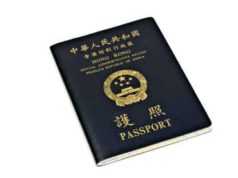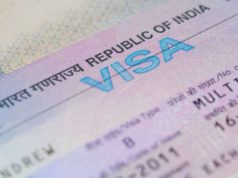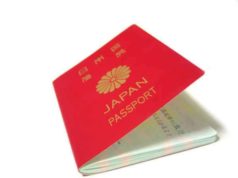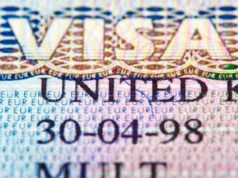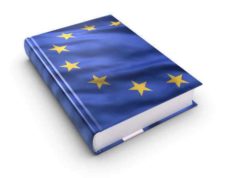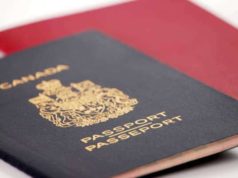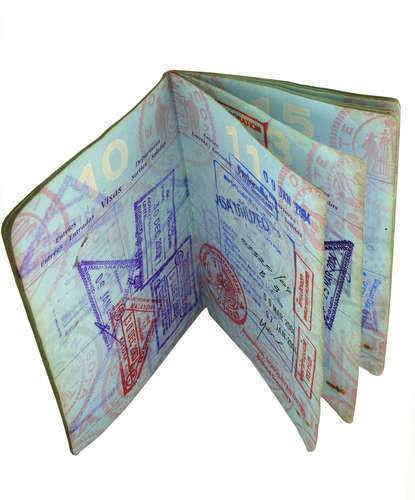
The Visa Waiver Program (VWP) was introduced in 1986 by the United States government as a solution to improve tourism, promote business, and enhance diplomatic relationships. It allows citizens from 38 countries, including Australia, Japan, the United Kingdom, and many countries in Europe, to travel to the United States for up to 90 days without obtaining a visa. The program has gone through several changes and updates since its inception, and it remains one of the most successful policies aimed at boosting tourism and facilitating travel to the United States. In this article, we explore the benefits of the Visa Waiver Program, the economic impact, and the changes that have occurred over the years.
What is the Visa Waiver Program?
The Visa Waiver Program is a policy that allows citizens from countries to enter the United States for up to 90 days without the need for a visa. This reduces the bureaucratic hurdles that travelers face when applying for a visa, which can be costly and time-consuming. To qualify for the program, travelers must have an electronic passport, a return ticket, and no previous immigration violations or criminal records. Over the years, the program has expanded to include more countries, and it has undergone several updates aimed at improving security and preventing terrorism.
Tourism and Business Benefits
One of the primary benefits of the Visa Waiver Program is that it promotes tourism and business. According to the Department of Homeland Security, in 2018, over 23 million visitors arrived in the United States using the program, accounting for over 60 percent of all international arrivals. These visitors spent an estimated $81 billion and supported more than 700,000 jobs. The top five countries of origin for VWP travelers were the United Kingdom, Germany, Japan, France, and South Korea.
The VWP has made it easier for people to visit the United States, which in turn, has a positive impact on the economy. Visitors spend money on transportation, accommodation, food, and souvenirs, which helps boost local economies and creates jobs. This spending also generates tax revenues for local and state governments and reduces the cost of public services for residents.
The program also benefits businesses that rely on foreign visitors. Hotels, restaurants, and tourist attractions depend on visitors, and the easier it is for these visitors to enter the United States, the more revenue these businesses can generate. For example, Orlando, Florida, which is home to several theme parks, including Walt Disney World and Universal Studios, is a major beneficiary of the VWP. In 2018, over 1.7 million visitors arrived from the United Kingdom, Germany, and France, accounting for 30 percent of all international visitors to Orlando.
Enhanced Diplomacy
The Visa Waiver Program also plays a key role in promoting diplomacy and building friendships between nations. When citizens from different countries can visit each other with ease, it helps foster a better understanding of different cultures and traditions. This could lead to more partnerships and collaborations between businesses, universities, and governments, creating shared benefits for all.
The United States has established mutual agreements with 38 countries under the VWP, which have the potential to deepen diplomatic relations. The agreements require that participating countries must also allow U.S. citizens to enter their country without a visa for a specified amount of time, further promoting travel and cultural exchange between nations.
Updates and Security Measures
In response to security concerns, the Visa Waiver Program has gone through several updates and security measures over the years. The most significant changes occurred following the September 11, 2001, terrorist attacks. In 2002, Congress passed the Enhanced Border Security and Visa Entry Reform Act, which included measures to improve background checks and screenings of incoming travelers.
The 2015 Visa Waiver Program Improvement and Terrorist Travel Prevention Act made further changes to the program, including the requirement that travelers must have biometric passports, which include a digital photo and fingerprint information. This ensures that travelers are who they say they are and improves overall security. The law also tightened restrictions on travelers who had visited countries such as Iran, Syria, and Sudan, considered to be state sponsors of terrorism or who had traveled to Iraq or Syria since March 2011.
In 2018, the Department of Homeland Security implemented the Electronic System for Travel Authorization (ESTA), which helps identify and prevent high-risk travelers from entering the United States. ESTA applicants must provide personal information such as their name, address, and passport details, which are then matched against various databases, including those of law enforcement agencies and terrorist watchlists. This system streamlines the application process and reduces the risk of potential threats entering the United States.
Conclusion
The Visa Waiver Program has proven to be a valuable tool for promoting tourism, enhancing business relationships, and improving diplomatic relations between the United States and other countries. The program has generated significant revenue for local economies and created job opportunities. By streamlining the visa application process and improving security measures, the VWP has become a safer and more efficient way to travel to the United States. As long as security measures remain strong, and countries continue to support the program, the Visa Waiver Program will continue to provide benefits for travelers, business owners, and the United States economy.
The Visa Waiver Program is a program enacted by the United States to remove barriers and facilitate the travel to the United States. It was designed to increase tourism business visa
Specific Benefits of the Visa Waiver Program:
The prime benefit of using the Visa Waiver Program if your country qualifies for it is skipping the visa application process if you plan on only visiting a country for a period of 90 days or less. The Visa Waiver Program grants access for one to enter into the United States without the hassle of filling out piles of paperwork to receive a visa. While the United States still performs a background check for each individual entering the United States, the benefit of not applying for a visa lifts many of the barriers that have hindered travel to the United States before 1986; such as being denied a visa for various reasons.
One travel reason that the Visa Waiver Program was aimed at was for business travel. Business trips to the United States are now much easier to set up and members from other countries can conduct business on an international scale with a new level of ease. In the grand scheme of things, the Visa Waiver Program has facilitated the spread of international business and trade and has allowed businesses a greater ability to grow, spread ideas, and conduct business deals.
Tourism is also another target for the Visa Waiver Program. The tourism industry, as a result of the Visa Waiver Program, has seen a rapid increase due to the lifted guidelines for visiting the United States. The doors for people living in eligible countries who were hesitant to travel or who were never approved for a visa are now open. Essentially, the economic effects for the Visa Waiver Program are one major reason to have it enacted and expanded in the future.
Another hidden but meaningful benefit of the Visa Waiver Program is the easier spread of ideas between the United States and other countries. On a long enough timeline, as people do more traveling, the spread of ideas becomes more widespread throughout the world. There are always new ideas that a traveler may leave behind in the United States or bring back with them to their own country. The spread of information is a valuable thing that many other countries are hoping to enjoy as the Visa Waiver Program continues to expand.



